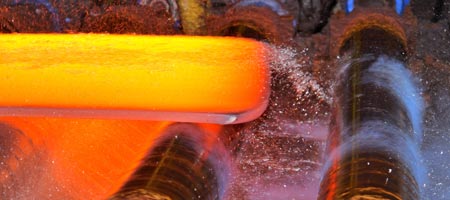How to Use Ultrasonic Thickness Gauges in Special Conditions
Taking measurements in special conditions like elevated temperatures or underwater bring up extra considerations for ultrasonic testing. If you plan to use an ultrasonic thickness gauge in any of the following conditions, please follow these recommendations to help ensure both safety and accurate results.
Ultrasonic Testing in High Temperatures
Measuring at elevated temperatures (higher than approximately 125 °F or 50 °C) requires careful planning. Many dual element transducers used in corrosion applications can withstand high temperatures, in some cases up to 930 °F or 500 °C in brief contact. However, standard contact transducers will get damaged or destroyed when exposed to temperatures higher than approximately 125 °F or 50 °C because of the varying thermal expansion coefficients of the materials used to construct them, which will cause disbonding at elevated temperatures. Never use contact transducers on a surface that is too hot to comfortably touch with bare fingers. Also, always perform high temperature measurements with single element transducers in Mode 2 or Mode 3 with either a delay line transducer (using an appropriate high temperature delay line) or an immersion transducer. Reach out to Olympus for more information on specific transducer selection.

Sound velocity in all materials changes with temperature, normally increasing as the material gets colder and decreasing as it gets hotter, with abrupt changes at freezing or melting points. This effect is much greater in plastics and rubber than in metals or ceramics. For maximum accuracy, calibrate the gauge sound velocity setting at the same temperature to perform measurements. Note that measuring hot materials with a gauge set to room temperature sound velocity will often lead to significant error. Finally, at temperatures greater than approximately 200 °F or 100 °C, we recommend using special high temperature couplants.
In-Line Measurements Using Ultrasonic Thickness Gauges
In-line or in-process ultrasonic thickness gauging enables continuous measurement of products like extruded plastic pipe and tubing, electrical cable jacket, and sheet metal while the product is moving. Multichannel instruments can measure at many different locations around the circumference of a tubular product or across the width of a sheet. In-line measurement is usually performed with immersion transducers that couple sound energy through a water bath or water column to avoid the need for direct contact with the product. In the case of extruded pipe, tubing, and cable jacket, measurements can often be made within existing cooling tanks by using the cooling water as a couplant. Some affixing is needed to hold the transducer(s) in proper alignment with the test material.
Ultrasonic Testing with Long Transducer Cables
Ultrasonic gauges are most often used with transducer cables approximately 1 meter or 3 feet in length. Generally, using very long cables is not recommended unless required by test conditions. When cable length exceeds about 3 meters or 10 feet at common test frequencies, cable effects should be considered since negative effects can occur. The maximum length of cable that can be used in a specific case will depend on the transducer type and minimum thickness to be measured. Note that dual element transducers can be used with much longer cables than single element transducers, potentially as long as 100 meters or 300 feet with an appropriate instrument setup. Pay particular attention to the problems of electrically matching the transducer to the cable, accounting for attenuation of the signal in the cable, and compensating for pulse transit time through the cable.
Ultrasonic Testing Underwater
Some corrosion survey applications involve situations such as measuring the thickness of support pilings or boat hulls submerged in water. While most standard contact, delay line, and dual element transducers can be briefly immersed in shallow water without problems, long-term submersion or deep submersion (deeper than about 2 meters or 6 feet) will eventually cause failure due to corrosion and water intrusion, especially in saltwater. For a deep-water marine application, water-resistant dual element transducers that are sealed against water intrusion under high pressure are normally used. As suggested above, these transducer types are available to use at depths up to approximately 100 meters or 300 feet.
There are certain considerations to take when measuring through coatings such as paint epoxy or other protective surfaces. For more information, see our coating thickness gauge section.